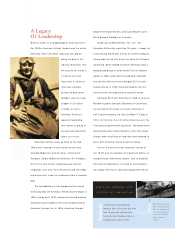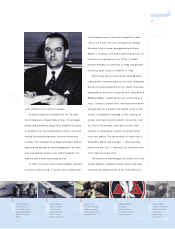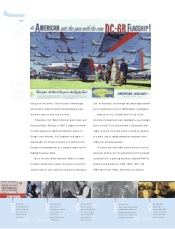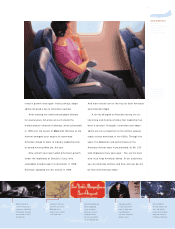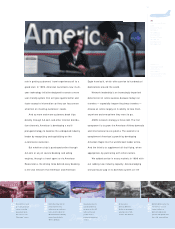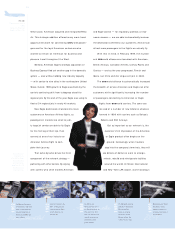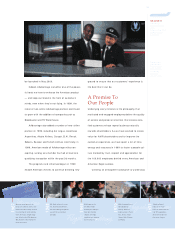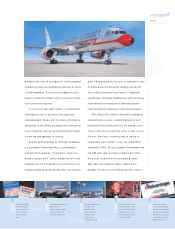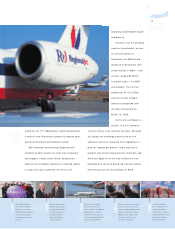American Airlines 1999 Annual Report Download - page 13
Download and view the complete annual report
Please find page 13 of the 1999 American Airlines annual report below. You can navigate through the pages in the report by either clicking on the pages listed below, or by using the keyword search tool below to find specific information within the annual report.
role in getting customers’ travel experiences off to a
good start. In 1999, American launched a new multi-
year technology initiative designed to create a more
user-friendly system that will give agents better and
faster access to information so they can focus more
attention on meeting customers’ needs.
And as more and more customers book trips
directly through AA.com and other Internet distribu-
tion channels, American is developing a multi-
pronged strategy to become the undisputed industry
leader by recognizing and capitalizing on the
e-commerce revolution.
But whether a trip is purchased online through
AA.com or any of several booking and selling
engines, through a travel agent or via American
Reservations, the driving force behind every booking
is the vast network that American and American
Eagle have built, which offers service to hundreds of
destinations around the world.
Network leadership is an increasingly important
determinant of airline success, because today’s air
travelers — especially frequent business travelers —
choose an airline largely on its ability to take them
anywhere and everywhere they want to go.
AMR’s network strategy is three-fold. The first
component is to grow the American Airlines domestic
and international route systems. The second is to
complement American’s growth by developing
American Eagle into the world’s best feeder airline.
And the third is to supplement all that flying, when
appropriate, by partnering with other carriers.
We added service in many markets in 1999 with-
out adding new industry capacity. Acknowledging
one particular gap in its domestic system on the
11
767
Manufacturer: Boeing
(USA)
Number in Fleet:
767-200: 8
767-200ER: 22
767-300ER: 49
Number of Seats:
767-200: 172
767-200ER: 165
767-300ER: 207
1947
1948
1949
1950
1951
New DC-6Bs hasten the trip
between major cities for
civilian travelers, as
American freighters and
personnel help provide a life-
line to U.N. troops in Korea.
DC-6s offer increased
speed and passenger
comfort, including
pressurized cabins
and coast-to-coast
“ Skysleeper” service.
Family Plan fares and the
new Convair 240 help
attract more air travelers at
home, while the American
Overseas Airlines subsidiary
begins flying the Berlin
Airlift in Germany.
Decommissioning its
last DC-3, American
becomes the first U.S.
airline with an all-
postwar fleet of
pressurized passenger
aircraft.
An era ends as
American Overseas
Airlines, a transatlantic
subsidiary since 1945,
is sold to Pan American.
Advances in
technology enable
employees to
better deliver
courteous and friendly
customer service.







